Another typical metamorphic mineral family are the Garnets. They are Nesosilicates, that is they are structured by isolated groups of SiO44- tetrahedrons; in this case the groups are made of 3 tetrahedrons: (SiO4)35-. Aluminum is often found bonded to those groups to form the typical Garnet radical: Al2(SiO4)33-, but ferric iron (III) is also common in Andradite, as chrome is in Uvarovite. This radical may also bond magnesium, iron and calcium.
|
|
||||||||||
| Mg | Fe | Mn | Fe3+ | Al | Cr | |||||
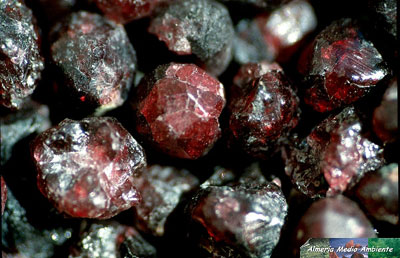 |
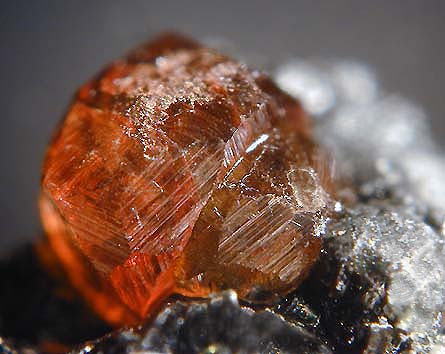 |
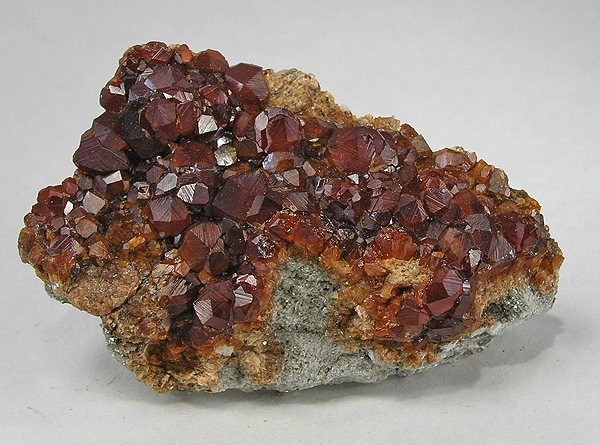 |
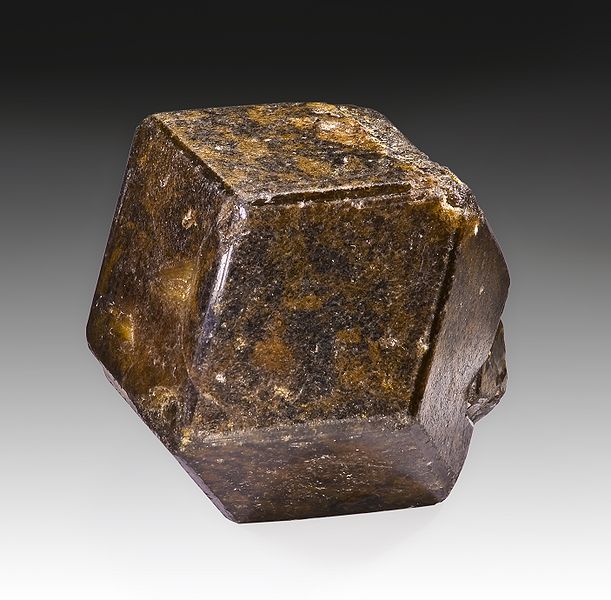 |
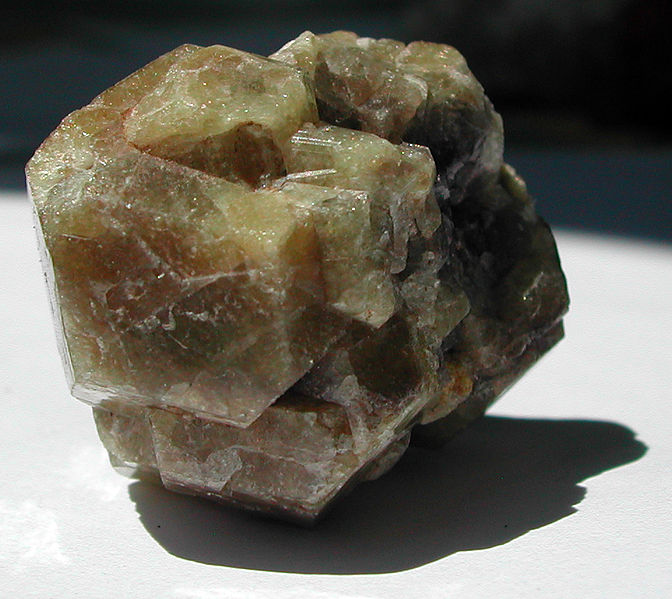 |
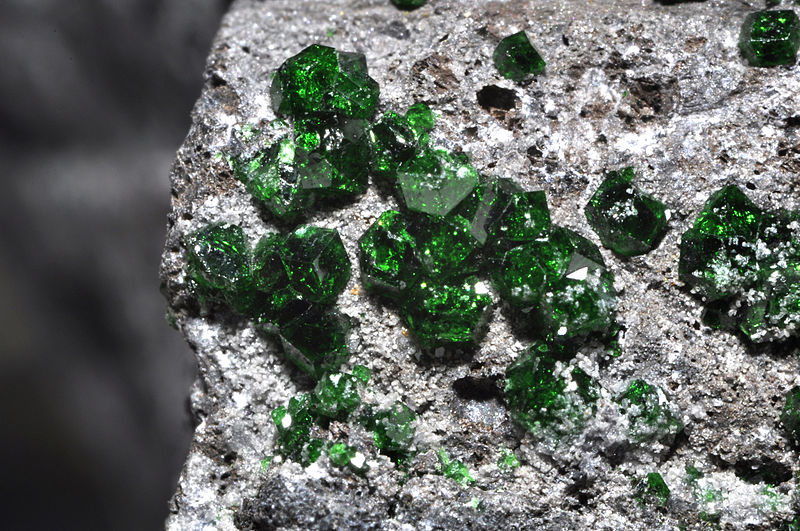 |
|||||
| Mg3Al2(SiO4)3 | Fe3Al2(SiO4)3 | Mn3Al2(SiO4)3 | Ca3Fe2(SiO4)3 | Ca3Al2(SiO4)3 | Ca3Cr2(SiO4)3 | |||||
| Pirope | Almandine | Spessartite | Andradite | Grossular | Uvarovite | |||||
| <——— | Calcic Garnets | ———> | ||||||||
|
|
||||||||||
Another group of nesosilicates is an important indicator of a metamorphic rock’s formation temperature: the aluminum silicate Al2SiO5. It exists in three polymorphs, never to be found together in the same rock, since they are stable at different pressure and temperature conditions: Andalusite forms at low pressure (LP) but variable temperatures; Cyanite only forms at high pressure (HP > 4 Kbar); Syllimanite forms at high temperature (HT) but variable pressure.
| HP | LP | HT |
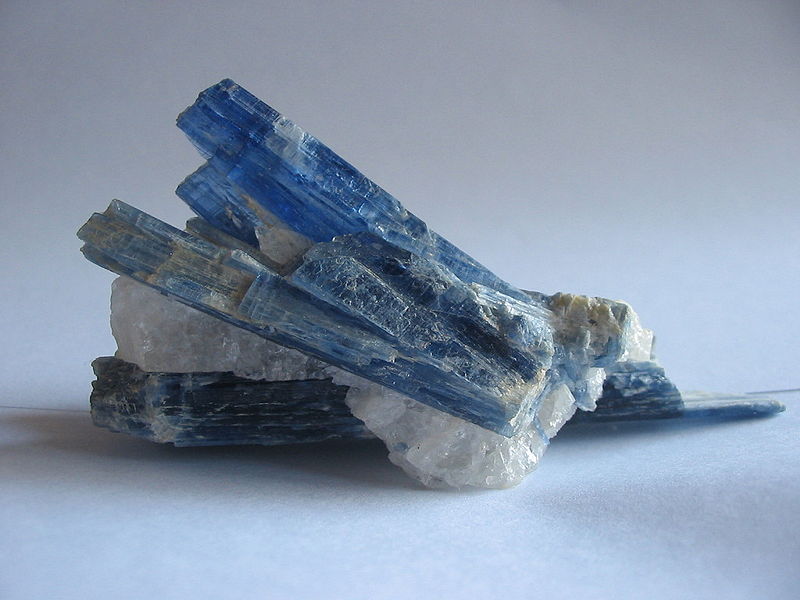 |
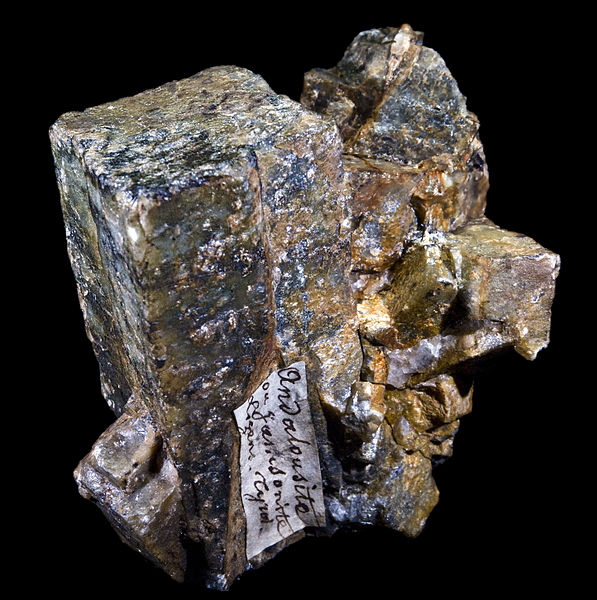 |
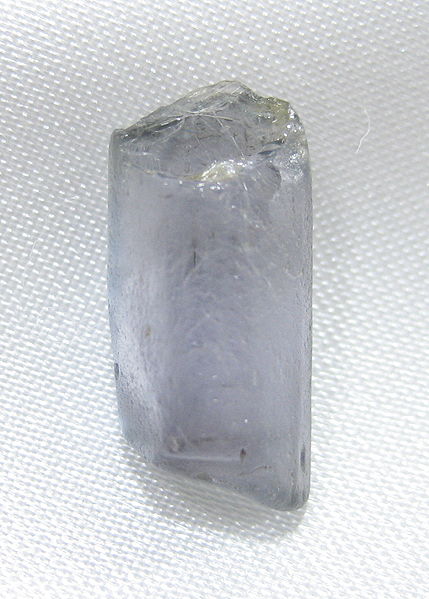 |
| Al2SiO5 | ||
| Cyanite | Andalusite | Syllimanite |
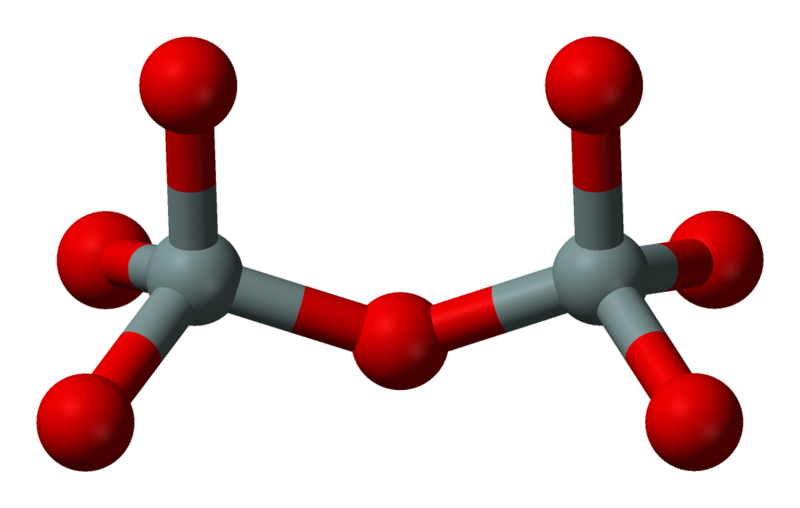 In some cases, the tetrahedron groups are formed by Si2O76- pairs (left) and are called Sorosilicates. In the Epidote group the tetrahedrons are bonded to calcium, ferric iron and aluminum, and also to a SiO4 group. Most common Epidotes are the Zoisite (orthorombic) and the Clinozoisite (monocline):
In some cases, the tetrahedron groups are formed by Si2O76- pairs (left) and are called Sorosilicates. In the Epidote group the tetrahedrons are bonded to calcium, ferric iron and aluminum, and also to a SiO4 group. Most common Epidotes are the Zoisite (orthorombic) and the Clinozoisite (monocline):
|
|
|||
| Fe3+ | Al | ||
 |
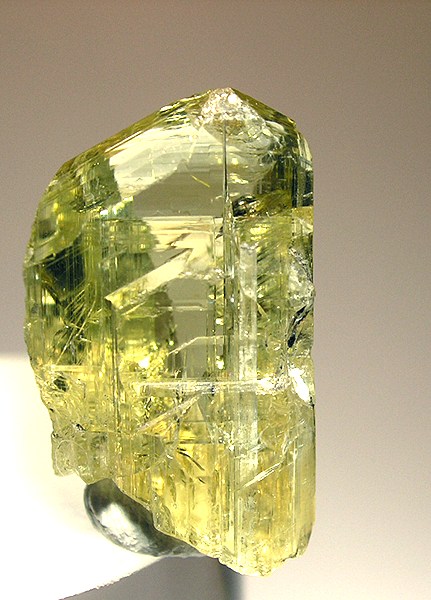 |
||
| Ca2(Al,Fe)3O(SiO4)(Si2O7)(OH) | Ca2Al3O(SiO4)(Si2O7)(OH) | ||
| Epidote | Zoisite | ||
|
|
|||